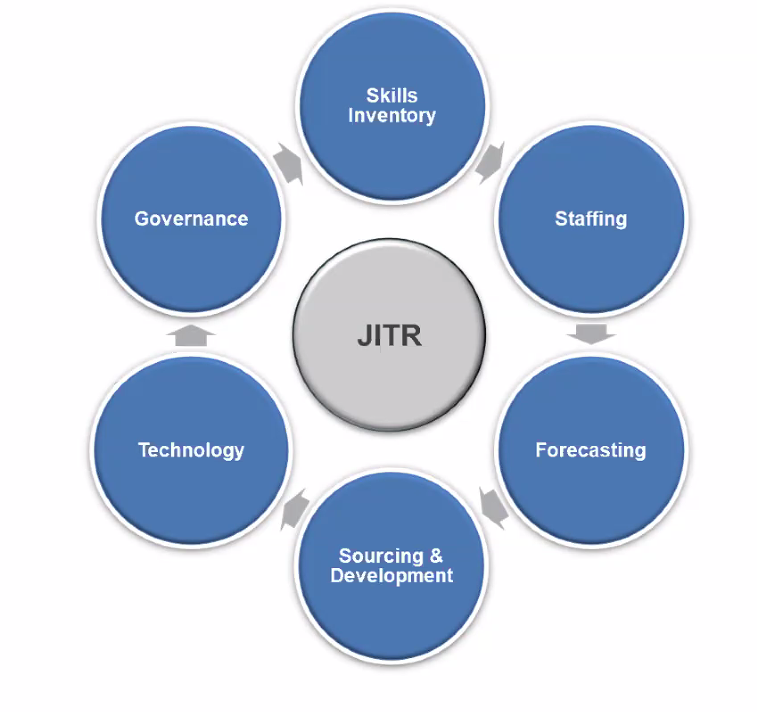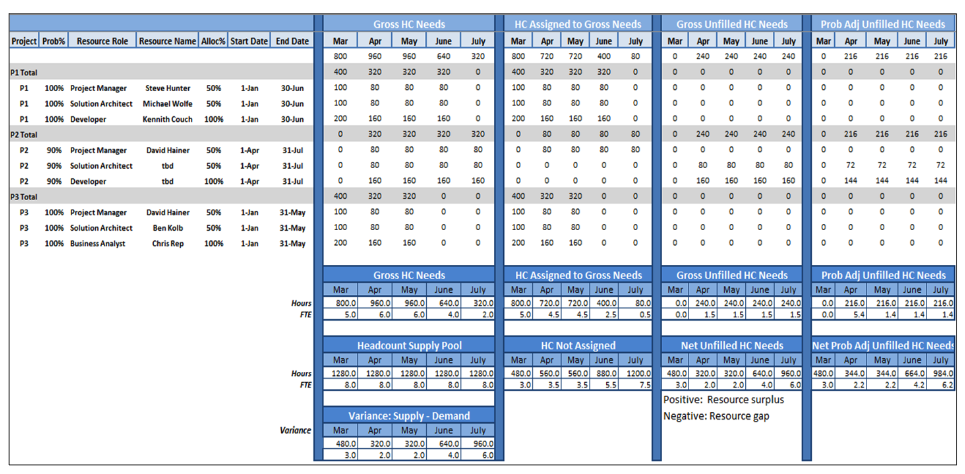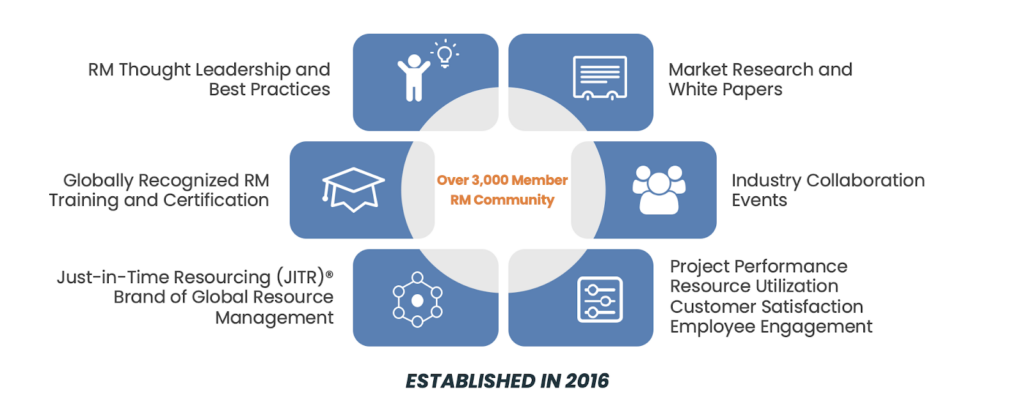The professional services industry moves quickly and leaves little room for mistakes. Using data to make decisions is crucial for acquiring the right team for your firm as well as keeping your top talent happy and productive.
In this article, we’ll explore strategies for leveraging resource planning to staff and retain talent in today’s competitive job market shared by the Managing Director of the Resource Management Institute, Ryan Childers during a recent webinar.
Keep on reading to learn the importance of meaningful resource planning in a competitive employee market.

Why You Should Be Focusing on Resource Management in Today’s Job Market
In today’s job market, efficient resource management is mission-critical to the success of professional service firms for the following reasons:
Improved Project Performance (Time, Budget, Quality)
Did you know that 35% of projects fail to meet some expectations of cost, timeliness, or quality? Efficient resource management enhances project timelines, ensures adherence to budgets, and elevates the overall quality of deliverables.
Improved Utilization
Optimal resource allocation leads to improved utilization, maximizing the potential of available resources, reducing idle time, and protecting profits.
Better Customer Satisfaction
Good resource management is the primary driver of project performance and customer service as it results in timely and high-quality deliverables, contributing directly to heightened customer satisfaction and loyalty.
Reduced Attrition and Better Employee Engagement
Labor is the single biggest cost line item for service providers. Strategic resource planning fosters a balanced workload, minimizing burnout, and enhancing employee engagement, thus reducing attrition rates.
Reduced Management Time Involved in Staffing Issues
Streamlined resource allocation diminishes the time spent on staffing problems, allowing management to focus on strategic initiatives and core business functions.
Let’s Start With What Good Resource Management Looks Like
Matching the right person to the right job at the right time brings great benefits. It ensures top-notch project execution, meets deadlines and budgets, and keeps quality high. This method also helps maximize resource use, meeting utilization targets. Customers are happy with effective expertise, and employees feel more engaged when their tasks fit, making work fulfilling. This coordination of people, timing, and tasks is key for dependable service delivery.
Good resource management is critical for firms like yours. Read our blog, Why Resource Management is Vital to Growing Your Professional Services Business to learn more.
Just-in-Time-Resourcing (JITR)
Comprised of six dynamic processes, each finely tuned to address the intricacies of modern business, RMI’s philosophy of JITR redefines how organizations optimize their resources and is ideal for a professional services organization. These processes, outlined below, encapsulate a comprehensive strategy that seamlessly aligns workforce capabilities with project demands, ensuring optimal efficiency, flexibility, and productivity. Used by hundreds of enterprises worldwide, JITR is a scalable commercial-grade solution for resource management that enables a common taxonomy for resource management.

Characterizing Our Supply
The skills inventory process of JITR is a fundamental building block of effective resource management. We characterize our supply through having normalized and well-defined skills and proficiencies across the organization.
When looking at your supply, ask yourself:
- Who do we have?
- What do they know?
- Where are they?
- Are they available?
- What do they want to do? (This is super important to capture and store this information so you can incorporate it into staffing criteria to help support employee engagement.)
Characterizing Our Demand
In a professional services organization, creating a sales pipeline report is vital. But it’s not enough. The key piece to the puzzle is having someone in the delivery team break down these sales opportunities into detailed project plans. These plans include who does what, when they start and finish, and how much time they’ll spend.
Moreover, the delivery team takes charge of managing ongoing dates in the backlog. Simultaneously, the resource management team continuously monitors roll-off dates from ongoing projects and accounts for planned new hires to gauge future resource capacity. This way, they’re ready to meet future demands by ensuring the right resources are available when needed. This method ensures that what’s projected in sales syncs seamlessly with actual project execution and resource allocation in the organization.
Bringing Supply and Demand Together to Visualize Hiring Needs
The interlock function refers to aligning all involved parties in understanding and agreeing on the factors driving demand. This involves analyzing the timing and status of upcoming opportunities, necessary resources, and timeframes for ongoing work, future resource availability, and hiring plans. The goal is to match and synchronize the available resources (supply) with the projected needs (demand). This process identifies any gaps between the required quantity and skills of resources, aiding in aligning supply with anticipated demand. See an example of the interlock function below.

Analyzing Supply and Demand Data
The interlock function is all about letting the data talk. Once you have compiled the data, ask yourself the following questions:
- Does the data look correct?
- What is the data saying?
- What are the implications?
- What are the actions and decisions to be made?
Once you have those answered, Ryan recommends going a layer deeper by asking the following questions:
- What are the trends relative to demand indicating?
- What are the key things that are driving demand? What if they happen or if they don’t happen?
- Where are our needs more prevalent (e.g.: certain roles or skills, focused on a particular product or service, etc.)?
- Do we have enough resources to cover our forecasted demand? Are they the right resources? What do we need to do on the supply side to address any mismatches (e.g.: recruit, train, partner etc.)?
Using Supply Data to Establish a Unified Language
Leveraging supply data becomes instrumental in fostering a shared language for discussing both supply and demand. By utilizing this data as a foundational element, stakeholders can communicate more effectively and precisely about resource availability and requirements. This common language facilitates clearer discussions, enabling better alignment between various teams involved in managing supply and fulfilling demand.
Implementing Robust Forecasting Practices for Demand Characterization
Employing robust forecasting disciplines is paramount in accurately characterizing your demand. A disciplined approach aids in understanding historical patterns, market trends, and other relevant factors shaping future demands. This strategic forecasting not only provides insights into anticipated needs but also helps in projecting potential variations, enabling organizations to adapt and prepare more effectively.
Strategic Analysis through Supply-Demand Overlays
Overlaying supply and demand data serves as a strategic tool to outline necessary actions required to proactively meet upcoming demands. This helps to facilitate a clear understanding of where potential gaps or surpluses may arise. It enables organizations to define actionable steps, whether it involves resource allocation, skill development, or operational adjustments, ensuring preparedness to address the needs of an evolving demand landscape. This analysis serves as a guide to steer proactive decision-making, minimizing reactive measures when demand changes occur.

How to Mitigate the Ill Timing of a Hire or Potentially a Bad Hire
Timing Analysis
Overlaying supply and demand data involves a detailed analysis to pinpoint periods when demand consistently exceeds your available supply. This thorough examination helps identify critical patterns and trends, highlighting specific times where resource shortages might occur. By delving deep into this data, you can anticipate and prepare for these spikes in demand, enabling proactive measures to balance resources efficiently.
Strategic Resource Characterization
Describing your demand and supply in common terms is key, as it provides a comprehensive understanding of your current resource landscape. This characterization not only clarifies what resources are at your disposal but also illuminates the precise skill sets that might be lacking or in high demand. Armed with this data-driven insight, your recruitment and hiring strategies become laser-focused, targeting the exact skills required to bridge potential gaps and meet upcoming demands effectively.
Building a Candidate Pipeline
Utilizing warm-pool recruiting to build a candidate pipeline involves more than just accumulating resumes. It’s about fostering relationships and nurturing connections with prospective candidates over time. By engaging with and maintaining regular communication with these potential hires, you ensure they remain engaged and interested. This approach establishes a pool of talented individuals who are familiar with your organization and are ready to step in when the timing aligns, reducing the risk of hiring mismatches or delays.
How to Increase Employee Engagement and Reduce Attrition on Your Team
Incorporate Employee Aspirations Into Staffing Formula
Capturing employee wants, needs, and growth opportunities within the skills database is crucial. When integrated into your staffing decision-making process, these elements enrich the approach significantly. By aligning individual employee aspirations, essential needs, and aspirations for growth with organizational goals, this integration ensures a more comprehensive perspective.
It allows for roles and assignments that not only address immediate project needs but also cater to employees’ career trajectories and developmental goals. This inclusion of diverse employee data in the staffing formula fosters heightened engagement, motivation, and a more tailored approach to talent management, leading to improved retention rates and heightened productivity.
Final Words
In a competitive job market, resource planning plays a pivotal role in securing and retaining top talent. It acts as the cornerstone of effective resource management, offering guidance to professional firms navigating challenging economic climates. By leveraging proper tools and support, firms can establish robust resource processes, instilling a sense of confidence for the road ahead.
From allocating resources based on skills, experience, and availability to preventing underutilization, BigTime’s resource management software helps you achieve everything discussed in this webinar and more.

About RMI
The Resource Management Institute (RMI) is dedicated to the advancement of resource and workforce management thought leadership, best practices, and standards.

RMI is currently welcoming new members! Interested in joining? Visit their website to learn more.





